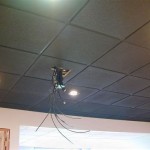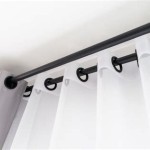Everything You Need To Know About Skim Coating Ceilings And Walls
Skim coating is a technique used to create a smooth, even surface on ceilings and walls, typically as a preparatory step before painting. It involves applying a thin layer of joint compound or drywall mud over the existing surface to fill in imperfections, such as nail holes, cracks, and uneven textures. This process can greatly enhance the overall appearance and finish of your walls and ceilings, making them look new and professionally done.
Benefits of Skim Coating
Skim coating offers several advantages, including:
- Improved Surface Smoothness: Skim coating fills in imperfections and creates a smooth, even surface, which is essential for a professional-looking paint job.
- Enhanced Paint Adhesion: A smooth surface allows paint to adhere better, resulting in a more durable and long-lasting finish.
- Concealment of Imperfections: Skim coating can effectively hide minor cracks, nail holes, and other surface flaws, giving your walls and ceilings a flawless appearance.
- Increased Light Reflectivity: A smooth, skim-coated surface reflects light more evenly, making rooms appear brighter and more spacious.
Materials Needed for Skim Coating
To skim coat your ceilings and walls, you will need the following materials:
- Joint compound or drywall mud
- Joint knife (4-6 inches wide)
- Putty knife (2-3 inches wide)
- Sandpaper (120-grit and 220-grit)
- Sanding sponge or sanding block
- Primer
- Paint
Step-by-Step Guide to Skim Coating
Follow these steps to successfully skim coat your ceilings and walls:
- Prepare the Surface: Clean the surface thoroughly to remove any dust, dirt, or grease. Repair any major cracks or holes with joint compound.
- Apply a Primer: Apply a coat of primer to the surface to improve adhesion and prevent stains from bleeding through.
- Mix the Joint Compound: Mix the joint compound according to the manufacturer's instructions. The consistency should be thick enough to hold its shape but not too thick to spread smoothly.
- Apply the First Coat: Using a 4-6 inch joint knife, apply a thin, even layer of joint compound over the surface, starting from one corner and working your way across. Hold the knife at a 30-45 degree angle and overlap each stroke slightly.
- Smooth the First Coat: Once the first coat has been applied, use a smaller putty knife to smooth out any rough edges or imperfections. Be gentle and avoid overworking the compound.
- Sand the First Coat: Allow the first coat to dry completely, then sand it lightly with 120-grit sandpaper to remove any bumps or ridges. Use a sanding sponge or sanding block for a more even finish.
- Apply the Second Coat: Apply a second thin coat of joint compound using the same technique as before. Focus on filling in any remaining imperfections and creating a smooth surface.
- Smooth the Second Coat: Use the putty knife to smooth out the second coat. This time, be even more careful to avoid creating any visible marks or lines.
- Sand the Second Coat: Allow the second coat to dry completely and sand it with 220-grit sandpaper to achieve a perfectly smooth surface.
- Prime and Paint: Apply a coat of primer to the skim-coated surface and allow it to dry. Once primed, you can paint the surface as desired.
Tips for Successful Skim Coating
- Use a high-quality joint compound specifically designed for skim coating.
- Apply the joint compound in thin, even layers to avoid cracking or peeling.
- Allow each coat to dry completely before sanding or applying subsequent coats.
- Sand the surface lightly and gradually, starting with coarse sandpaper and moving to finer grits.
- Use a damp sponge or cloth to remove any sanding dust before priming or painting.
By following these steps and tips, you can achieve a professional-looking skim coat finish on your ceilings and walls, creating a smooth and flawless canvas for your desired paint color and décor.

How To Skim Coat Walls With The Best Of Them Daniel Kanter

How To Skim Coat Walls With The Best Of Them Daniel Kanter

Smooth Things Out A Beginner S Guide To Skim Coating Textured Walls Dress Cori Lynn

Five Reasons To Apply A Skim Coat Family Handyman

What Is The Purpose Of Skim Coating Drywall

How To Skim Coat Walls With The Best Of Them Daniel Kanter

How To Skim Coat Remove Wall Texture Sawdust Girl

Why And How To Skim Coat Your Ceiling Before Painting It

How To Skim Coat Walls With The Best Of Them Daniel Kanter

How To Skim Coat A Ceiling Step By Guide
Related Posts








